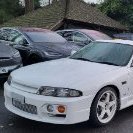Wheel Bearing 3Rd Time Lucky (Hopefully!)
Announcements
-
Similar Content
-
Latest Posts
-
qld plates “GTR R34” for sale $5500 (listed else where)
-
Or, just take PS pump off and inspect? Does no-one do this any more?
-
By drifter17a · Posted
Yep it is overflowing. All was working fine but been off for a year so guess something may have seized. Steering is heavy yes i will raise the front of the car and will turn side to side to test id bubble goes away -
Does the steering feel heavy when you turn the wheels? Any puddles of fluid on the floor or that you can see leaking from anywhere? You could try bleeding the system, if it’s making a whining sound when turning the wheels then that’s a sure indication there’s air in there somewhere. Start the car and remove the reservoir cap, then turn the wheels from left to right a few cycles and then check if you see any air bubbles rising to the top of the reservoir. Top up if necessary and repeat. Otherwise, I can only suggest that your pump vanes have seized or that there is a perished seal somewhere??





Recommended Posts
Create an account or sign in to comment
You need to be a member in order to leave a comment
Create an account
Sign up for a new account in our community. It's easy!
Register a new accountSign in
Already have an account? Sign in here.
Sign In Now